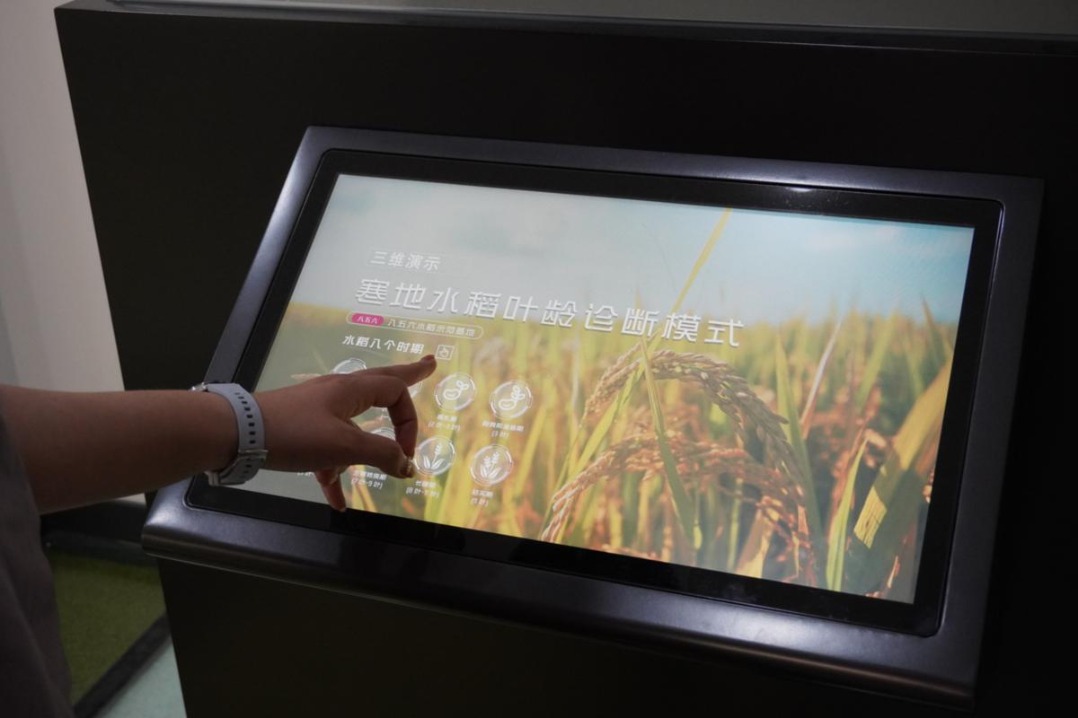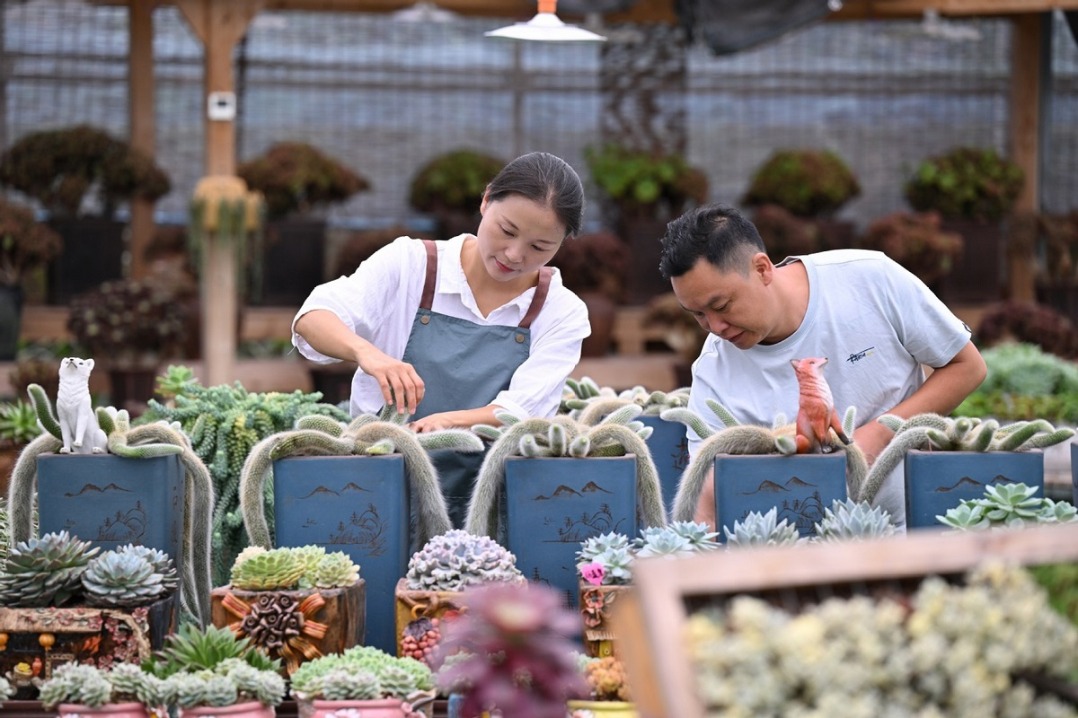Guizhou's chiles delight hearts, boost incomes


GUIYANG — Chile peppers are the soul of the local cuisine in Guizhou province. They are an essential ingredient in every dish, and the absence of this indispensable spicy delight renders a dish incomplete. Even vegetarian options, like boiled green melon and beans, are traditionally served with a flavorful chile dipping sauce.
Early in the morning, the city of Zunyi awakens to a variety of restaurants, both large and small, serving mutton rice noodles, a popular dish of piping hot bowl of rice noodles swimming in chile-infused red oil. The texture of rice noodles and the spiciness of the chile in this dish are often more appreciated than the mutton itself. "For the people of Zunyi, chile peppers are crucial to satiating hunger, and only by satisfying one's hunger can one's spirits remain high. While the absence of a staple like rice is manageable at times, the absence of chiles is unthinkable," said the owner of a mutton rice noodle restaurant in Yongxing township, Zunyi city.
From a spicy and sour soup with fish and hot pot to kebabs in the night markets, chile peppers are essential to these delectable dishes. Whether it's in the form of paste, pickle, oil or roasted pepper, the diverse forms of chile add a distinct and beloved flavor to local cuisine.
Historical records indicate that the culinary use of chile peppers in Guizhou can be traced back over 400 years, signifying a long-standing appreciation for the spicy ingredient in the region. Chile peppers are not only tempting foodies, they are also spicing up the economy. Zunyi's renowned Xiazi township, which is known as "Chinese Pepper City", is a bustling trading center where dealers gather daily.
During the summer, fresh chile peppers are bought and sold, turning "pepper city" into a vibrant red sea of activity. Thousands of brokers converge there, seeking business opportunities and contributing to the economic vitality of the region.
Xiazi has evolved over time. From its early days of spontaneous and scattered trading, it has become Zunyi's official chile pepper market and serves as a central trading hub, with big data centers, financial service centers, logistics distribution centers and inspection and quarantine centers.
Opened in 2017, after years of development, the market now covers 30.53 hectares and hosts an annual trade of 750,000 metric tons of chile peppers. Last year, it sold 7.2 billion yuan worth ($1 billion) of chiles.
Shi Yongsong, the executive vice-president of the Zunyi Pepper Industry Association, has dedicated 30 years to the chile pepper industry. His family's connection to peppers runs deep, as even in his 70s, his father remains actively involved in production and trading.
"It feels like we were born for peppers. From planting to buying and selling, our ancestors have been intimately connected to peppers for generations," Shi said.
Shi said that in addition to selling Guizhou peppers produced in Zunyi, "pepper city" also sells chiles from other parts of China, including the Xinjiang and Inner Mongolia autonomous regions and Henan province, as well as chiles imported from India, Myanmar and other countries. Now, the chiles traded in "pepper city" come from more than 80 countries and regions.
Home to China's only chile pepper market, Guizhou's position in the pepper trading sector is significant.
Its pepper index serves as a barometer for pepper trading, providing valuable insight into market trends. Each year, when peppers are listed, many regions and marketplaces await the price of Guizhou chile peppers before determining the prices of their own varieties.
The vibrant red chile represents prosperous days for farmers in Guizhou. According to data from the province's agriculture and rural affairs department, Guizhou's chile planting area accounts for approximately one-tenth of the global total and one-sixth of China's. There are 20 counties in the province with planting areas of chile peppers in excess of 6,666.67 hectares. In recent years, it has produced around 7.8 million tons of chiles, with an annual output value of approximately 27 billion yuan.
"The chile industry should not be underestimated as it has the potential to create substantial benefits if managed effectively," said Wang Jie, an agricultural technician at a chile pepper planting center in Tangbian village, who also teaches nearby villagers about seedling raising, fertilization and pest control.
Xinhua
- Lead exposure prompts school food safety inspections
- More occupations bolstering China's employment market
- Tourists flock to locations featured in hot TV shows
- Intl volunteers serve as bridge linking Jingdezhen, world
- Advanced weapon systems make debut
- Biandukou's golden sea of rapeseed blossoms welcomes visitors





































